 Music should never be judged purely. It should be judged on how 'wrong'or how 'right' it feels in the ears of them who listen. This may not bea reason why V/Vm have taken the trouble to simultaneously release twovery different selections of 'good things' which they claim areactually the same. Both discs have twelve tracks with the same titles.Previous plunderous releases enabled by the VVMCPS laws such as 'SickLove' might be aptly described as corny, but make no mistake it's wheaton the cover of these two. This is pure germ of V/Vm - remember theearliest V/Vm 12" releases or the Fat Cat split with Third EyeFoundation and that'll give you some idea of what to expect from the CDwith the regular yellow wheat. If I wanted to be cheeky I could tellyou that this is what it would sound like if V/Vm helped Aphex Twinwithout doing any hacking, but I know Jim's sickly traumatised by thedeath of the racist granny robot so I'll try not to mention AFX and hisinfluence again. Whatever, this is the sound of V/Vm distilled to pureessence of wheat beer hoedown direct from the mythical school thatplays records with wooden styli. The inverted blue wheat disc is likethe imagined brick bashing your head the next day in hangover city. Myguess was that it's the same tracks but crunched up through distortionand ring modulation and all that fun stuff, but someone in the knowsays this is not so, and the two CD's are not exactly the same lengtheither. In fact there's so much of that digital processing on the blueone that even though its massive robot noise approaches all consumingnuclear meltdown the sound seems to run a bit thin at times. Obviouslythe blue one is the one for noise heads to hear, just don't mentionMerzbow. A lot of it actually sounds like it could be mashed uprecordings of explosions. "The View Below Me Was Always the Same" isthe deceptively titled intro to each CD. Yellow is Caretaker type organswells. Blue is a discordant ring modulator sweep punctuated byexplosions. "The Truth is Dead" is the conclusion they reach before theunderwater Aphex beat excursion "Some Things Look Better Baby." Sorry Iforgot I said I wouldn't mention that Twin again. This far into theblue disc and it's deafening machine grind all the way until completelyfucked relentless deaf disco splatters brains. The idea is probablythat the yellow one is right in that its more conventionally tuneful,but wrong in that this kind of thing is not expected of V/Vm; blue iswrong in that it's a big noise but right in that it confirms V/Vm'sreputation for making big cacophony. But how did it make me feel? Theblue one made me feel like a daffodil in a rainstorm but the yellow onemade me feel like a witch in beat. With all this hack lack and wheatygoodness V/Vm will be claiming they're serious artists next. But ofcourse they always were?
Music should never be judged purely. It should be judged on how 'wrong'or how 'right' it feels in the ears of them who listen. This may not bea reason why V/Vm have taken the trouble to simultaneously release twovery different selections of 'good things' which they claim areactually the same. Both discs have twelve tracks with the same titles.Previous plunderous releases enabled by the VVMCPS laws such as 'SickLove' might be aptly described as corny, but make no mistake it's wheaton the cover of these two. This is pure germ of V/Vm - remember theearliest V/Vm 12" releases or the Fat Cat split with Third EyeFoundation and that'll give you some idea of what to expect from the CDwith the regular yellow wheat. If I wanted to be cheeky I could tellyou that this is what it would sound like if V/Vm helped Aphex Twinwithout doing any hacking, but I know Jim's sickly traumatised by thedeath of the racist granny robot so I'll try not to mention AFX and hisinfluence again. Whatever, this is the sound of V/Vm distilled to pureessence of wheat beer hoedown direct from the mythical school thatplays records with wooden styli. The inverted blue wheat disc is likethe imagined brick bashing your head the next day in hangover city. Myguess was that it's the same tracks but crunched up through distortionand ring modulation and all that fun stuff, but someone in the knowsays this is not so, and the two CD's are not exactly the same lengtheither. In fact there's so much of that digital processing on the blueone that even though its massive robot noise approaches all consumingnuclear meltdown the sound seems to run a bit thin at times. Obviouslythe blue one is the one for noise heads to hear, just don't mentionMerzbow. A lot of it actually sounds like it could be mashed uprecordings of explosions. "The View Below Me Was Always the Same" isthe deceptively titled intro to each CD. Yellow is Caretaker type organswells. Blue is a discordant ring modulator sweep punctuated byexplosions. "The Truth is Dead" is the conclusion they reach before theunderwater Aphex beat excursion "Some Things Look Better Baby." Sorry Iforgot I said I wouldn't mention that Twin again. This far into theblue disc and it's deafening machine grind all the way until completelyfucked relentless deaf disco splatters brains. The idea is probablythat the yellow one is right in that its more conventionally tuneful,but wrong in that this kind of thing is not expected of V/Vm; blue iswrong in that it's a big noise but right in that it confirms V/Vm'sreputation for making big cacophony. But how did it make me feel? Theblue one made me feel like a daffodil in a rainstorm but the yellow onemade me feel like a witch in beat. With all this hack lack and wheatygoodness V/Vm will be claiming they're serious artists next. But ofcourse they always were? samples:



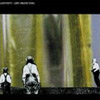 It really seems like every other week Bob Pollard has a new record out,doesn't it? He has a myriad of bands to play with, he was an anxiouslabel in Rockathon, ready to release whatever he graces them with, andhe's on the cover of Magnet every other week, so Mr. Pollard does havea fan base to keep up with, it would seem. With a new Guided By Voicesrecord coming in June - the band are back on Matador this go around -Bob tides the fans over with this, his second effort with formerbandmate Tobin Sprout. Is is time to for Mr. Pollard to throw in thetowel with these side collaborations? Almost, by my estimation. Thistime around, Airport 5 are darker, grittier, and more lo-fi thanbefore. Bob seems intent on providing as many vocal tracks as possible,and that means double-tracking, doing his own background vocals, andbasically monopolizing the mike. Sprout's instrumentation is, asalways, acceptable and worthy of the treatment. But, again, this typeof collaboration seems to suffer by the lack of face-to-facecollaboration. Some of the vocal tracks are so rough, it'sembarrassing, but only given GBV's recent love of real recordingequipment - the vocals would be right at home on earlier releases bythe band. The lyrics are quirky, and, for the most part, Pollard doesnot over exert himself in order to hit notes he shouldn't. And thealbum is not without highlights, or, in this case, moments that work.'Yellow Wife No. 5' and 'I Can't Freeze Anymore' are among the bestsongs Pollard and Sprout have EVER recorded. But the album as a wholeis close to forgettable. And short. In short, if you're a GBV fan, thiswill serve to tide you over. If you're not, you won't be wowed orpushed away. (Is this what was meant by the rumor that Matador askedPollard to pair down the projects he worked on because they thoughthe'd clutter the marketplace with work that was not as polished as GBV,and buyers would have a problem knowing just what to buy?) -
It really seems like every other week Bob Pollard has a new record out,doesn't it? He has a myriad of bands to play with, he was an anxiouslabel in Rockathon, ready to release whatever he graces them with, andhe's on the cover of Magnet every other week, so Mr. Pollard does havea fan base to keep up with, it would seem. With a new Guided By Voicesrecord coming in June - the band are back on Matador this go around -Bob tides the fans over with this, his second effort with formerbandmate Tobin Sprout. Is is time to for Mr. Pollard to throw in thetowel with these side collaborations? Almost, by my estimation. Thistime around, Airport 5 are darker, grittier, and more lo-fi thanbefore. Bob seems intent on providing as many vocal tracks as possible,and that means double-tracking, doing his own background vocals, andbasically monopolizing the mike. Sprout's instrumentation is, asalways, acceptable and worthy of the treatment. But, again, this typeof collaboration seems to suffer by the lack of face-to-facecollaboration. Some of the vocal tracks are so rough, it'sembarrassing, but only given GBV's recent love of real recordingequipment - the vocals would be right at home on earlier releases bythe band. The lyrics are quirky, and, for the most part, Pollard doesnot over exert himself in order to hit notes he shouldn't. And thealbum is not without highlights, or, in this case, moments that work.'Yellow Wife No. 5' and 'I Can't Freeze Anymore' are among the bestsongs Pollard and Sprout have EVER recorded. But the album as a wholeis close to forgettable. And short. In short, if you're a GBV fan, thiswill serve to tide you over. If you're not, you won't be wowed orpushed away. (Is this what was meant by the rumor that Matador askedPollard to pair down the projects he worked on because they thoughthe'd clutter the marketplace with work that was not as polished as GBV,and buyers would have a problem knowing just what to buy?) - 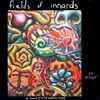 Austinite Michael "Thor" Harris is practically a modern day renaissance man: multi-instrumentalist, painter, art and bicycle repair instructor and environmentally conscious DIY home builder. He has appeared on many others albums and performed live locally and nation-wide, but he's probably best known outside Austin city limits as percussionist for Michael Gira's The Angels of Light.
Austinite Michael "Thor" Harris is practically a modern day renaissance man: multi-instrumentalist, painter, art and bicycle repair instructor and environmentally conscious DIY home builder. He has appeared on many others albums and performed live locally and nation-wide, but he's probably best known outside Austin city limits as percussionist for Michael Gira's The Angels of Light.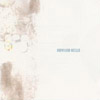 Kenseth Thibideau and Marty Anderson are Howard Hello, and on this,their debut on Temporary Residence, the announce themselves far moreeffectively than the name might imply. Given that Thibideau's previouswork was with Tarentel, you could expect that the record would havesome similar elements, and that it would be a strong, gorgeous release.That it is. The soundscape is mainly familiar-sounding melodies thathave been recorded, then edited, jumbled, and extrapolated to make newcompositions on top of the old structure. There are guitar melodies,organs, keyboards: instruments of all types are used. The compositionsthat are created are very ambient, full, and spellbinding. And MartyAnderson's voice is purely haunting, adding a fantastic element to theproceedings. The ambient vocals by Wendy Allen are also stunning, and,at times, the vocals are the only part you can clearly follow, as theyare the main element, saved from being cut-up and reproduced. Theamazing thing is, even though elements are repeated - Anderson's vocalon 'Revolution,' melodies - the music never sounds repetitive or stale.It gets into your head, burrowing way down deep. This is a dynamicsound, with elements being added as the song progresses, allowing it togrow, swell, climax, and then fade away, leaving you with the scars.And there will be after you've heard this, believe me. An excellentdebut, well deserving of your hard-earned cash. Your ears have beenwaiting for something like this again.
Kenseth Thibideau and Marty Anderson are Howard Hello, and on this,their debut on Temporary Residence, the announce themselves far moreeffectively than the name might imply. Given that Thibideau's previouswork was with Tarentel, you could expect that the record would havesome similar elements, and that it would be a strong, gorgeous release.That it is. The soundscape is mainly familiar-sounding melodies thathave been recorded, then edited, jumbled, and extrapolated to make newcompositions on top of the old structure. There are guitar melodies,organs, keyboards: instruments of all types are used. The compositionsthat are created are very ambient, full, and spellbinding. And MartyAnderson's voice is purely haunting, adding a fantastic element to theproceedings. The ambient vocals by Wendy Allen are also stunning, and,at times, the vocals are the only part you can clearly follow, as theyare the main element, saved from being cut-up and reproduced. Theamazing thing is, even though elements are repeated - Anderson's vocalon 'Revolution,' melodies - the music never sounds repetitive or stale.It gets into your head, burrowing way down deep. This is a dynamicsound, with elements being added as the song progresses, allowing it togrow, swell, climax, and then fade away, leaving you with the scars.And there will be after you've heard this, believe me. An excellentdebut, well deserving of your hard-earned cash. Your ears have beenwaiting for something like this again. 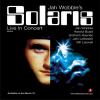 Hot on the heels of the Deep Space double live album "Largely Live InHartlepool & Manchester", Jah Wobble has already assembled a newunit, toured and recorded another live album. Solaris is Wobble onclean bass, longtime collaborator Bill Laswell on distorted bass,composer Harold Budd on piano and keyboards, Graham Haynes on cornetand electronics and Jaki Leibezeit of Can on drums. It's almost a caseof too much talent for one group but, as you'd expect from improvisersof this caliber, each and every member knows their place and they sharethe limelight admirably. The starting point is Budd's modal scales onpiano, then Wobble's relentlessly repetitious (yet infectious) basspatterns, then Leibezeit's metronomic snare-centric beat. Haynes,Laswell and Budd then texture wrap the groove with ambient backdropsand kinda sorta solos. The group gels, ebbs, flows and orgasms in equaldoses, their sound more jazzy than Deep Space's worldliness. With threeof the four tracks in the 19 to 25 minute range, it's all about gettinginto the comfort zone of the groove. The two part 'The Mystery ofTwilight', 45 minutes total, is most engaging as overdriven riffs burnalongside a heavy duty rhythmic propulsion. Another winner from Wobbleand friends.
Hot on the heels of the Deep Space double live album "Largely Live InHartlepool & Manchester", Jah Wobble has already assembled a newunit, toured and recorded another live album. Solaris is Wobble onclean bass, longtime collaborator Bill Laswell on distorted bass,composer Harold Budd on piano and keyboards, Graham Haynes on cornetand electronics and Jaki Leibezeit of Can on drums. It's almost a caseof too much talent for one group but, as you'd expect from improvisersof this caliber, each and every member knows their place and they sharethe limelight admirably. The starting point is Budd's modal scales onpiano, then Wobble's relentlessly repetitious (yet infectious) basspatterns, then Leibezeit's metronomic snare-centric beat. Haynes,Laswell and Budd then texture wrap the groove with ambient backdropsand kinda sorta solos. The group gels, ebbs, flows and orgasms in equaldoses, their sound more jazzy than Deep Space's worldliness. With threeof the four tracks in the 19 to 25 minute range, it's all about gettinginto the comfort zone of the groove. The two part 'The Mystery ofTwilight', 45 minutes total, is most engaging as overdriven riffs burnalongside a heavy duty rhythmic propulsion. Another winner from Wobbleand friends. 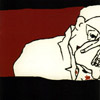 Tiger Saw are from Newburyport, Massachusetts, or, at least, that's where they began. After writing most of their debut alone in Los Angeles, Dylan Metrano brought those songs home to Newburyport, where he found like-minded souls to help him bring those creations to life. In listening to their records, it seems he found more along the lines of kindred spirits who were lying in wait for this sound to come along. It is not a wholly original sound (are there any of those anymore?), as Tiger Saw play primarily slowcore music in the vain of Low or 27. But it is a new twist, as most songs possess a jazz structure, but a rock-like instrumentation. And it is a lovely listen.
Tiger Saw are from Newburyport, Massachusetts, or, at least, that's where they began. After writing most of their debut alone in Los Angeles, Dylan Metrano brought those songs home to Newburyport, where he found like-minded souls to help him bring those creations to life. In listening to their records, it seems he found more along the lines of kindred spirits who were lying in wait for this sound to come along. It is not a wholly original sound (are there any of those anymore?), as Tiger Saw play primarily slowcore music in the vain of Low or 27. But it is a new twist, as most songs possess a jazz structure, but a rock-like instrumentation. And it is a lovely listen.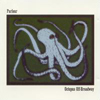 Do you remember what your first dream was like? When you woke up youwere either so glad it was over, or you wanted to go back and live inthat world forever. Sometimes you'd have the dream again and again,like some foreboding message or prophecy. If I had a dream where I ameverything I want to be, I would want Parlour to provide thesoundtrack. And I would want that dream to happen every time I go tosleep, just so I could hear that music again. Tim Furnish, best knownfor his work in Cerebellum and Crain, formed Parlour by joining withthe experimental band Paden in 1999, and the result is nothing short ofstunning. A strong rhythm section drives each track, with keyboardbeeps, whistles, and samples joined with hypnotic guitars and bassfeeding the frenzy. Furnish's dabbling in Aerial M and The ForCarnation have had an influence on him, as this music is dark in tone,but not sinister. From the opening track, 'Stipendlax,' with its simpleguitar chords and droning bass; to the funky bass and keyboards of'Aflipperput'; to the simple lullaby melody of 'Sleeper'; to thelaidback groove of 'Weeds That Grow Into Trees'; Parlour infect youwith their driven, relaxing tone. Every track is a lot to absorb in onelisten, as there's so much happening on so many different levels.Fortunately, although the music is simple, it is never repetitive. Eachtrack builds and builds, adding elements that intersect, intertwine,and interrupt your brain's normal activity. It's that infecting andthat endearing. This is cerebral math rock. This is the sound ofdreams. And I'm going to sleep here pretty soon.
Do you remember what your first dream was like? When you woke up youwere either so glad it was over, or you wanted to go back and live inthat world forever. Sometimes you'd have the dream again and again,like some foreboding message or prophecy. If I had a dream where I ameverything I want to be, I would want Parlour to provide thesoundtrack. And I would want that dream to happen every time I go tosleep, just so I could hear that music again. Tim Furnish, best knownfor his work in Cerebellum and Crain, formed Parlour by joining withthe experimental band Paden in 1999, and the result is nothing short ofstunning. A strong rhythm section drives each track, with keyboardbeeps, whistles, and samples joined with hypnotic guitars and bassfeeding the frenzy. Furnish's dabbling in Aerial M and The ForCarnation have had an influence on him, as this music is dark in tone,but not sinister. From the opening track, 'Stipendlax,' with its simpleguitar chords and droning bass; to the funky bass and keyboards of'Aflipperput'; to the simple lullaby melody of 'Sleeper'; to thelaidback groove of 'Weeds That Grow Into Trees'; Parlour infect youwith their driven, relaxing tone. Every track is a lot to absorb in onelisten, as there's so much happening on so many different levels.Fortunately, although the music is simple, it is never repetitive. Eachtrack builds and builds, adding elements that intersect, intertwine,and interrupt your brain's normal activity. It's that infecting andthat endearing. This is cerebral math rock. This is the sound ofdreams. And I'm going to sleep here pretty soon. 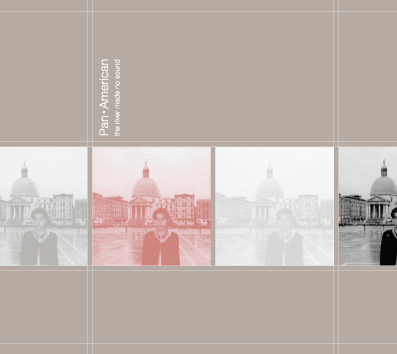 Mark Nelson has shed some layers for the latest full-length release as Pan•American. No longer is he trading tapes with friends like the first or recruiting other players to guest like the second album. Much like the last Labradford album, this time it's all him. For those who have been following his career with the various singles and compilation track contribututions, the sound should come as no surprise. The influence from various other "micro-house" type people can be felt as there's more non-musical outside sounds like underlying electronic hiss, clicks and pops. What separates Nelson from the rest of the crowd is his undeniable talents as both a great musician and composer. Despite the overall quiet nature of the disc, his subtle synthetic organ melodies are lush and involved, inviting and even sexy. I'm almost embarassed to admit that 'The River' makes for a great record to underscore quite a romatic evening to. While many other uses can include schoolwork, housework, or quiet time, it is a fascinating album to completely tune the world out and zone out to. Yummmm.
Mark Nelson has shed some layers for the latest full-length release as Pan•American. No longer is he trading tapes with friends like the first or recruiting other players to guest like the second album. Much like the last Labradford album, this time it's all him. For those who have been following his career with the various singles and compilation track contribututions, the sound should come as no surprise. The influence from various other "micro-house" type people can be felt as there's more non-musical outside sounds like underlying electronic hiss, clicks and pops. What separates Nelson from the rest of the crowd is his undeniable talents as both a great musician and composer. Despite the overall quiet nature of the disc, his subtle synthetic organ melodies are lush and involved, inviting and even sexy. I'm almost embarassed to admit that 'The River' makes for a great record to underscore quite a romatic evening to. While many other uses can include schoolwork, housework, or quiet time, it is a fascinating album to completely tune the world out and zone out to. Yummmm.
